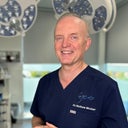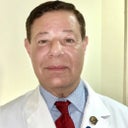Posted underDermal Fillers q&a
How Do I Get Rid of Wrinkle Filler if I Don't Like the Results?
I read that injectables can be extracted from the skin if you don't like the results. How is this possible? Laverné from Indianapolis, IN
Answers (18)
From board-certified doctors and trusted medical professionals
Dr. Leila Kasrai, MD, FRCSC

Dr. Leila Kasrai, MD, FRCSC
Certified Plastic Surgeon
Answer
Dr. Nima Shemirani, MD

Dr. Nima Shemirani, MD
Board Certified Facial Plastic Surgeon
Answer
Answered on Jun 12, 2017
Answer
Dr. Richard J. Bruneteau, MD

Dr. Richard J. Bruneteau, MD
Board Certified Plastic Surgeon
Answer
Dr. Mathew C. Mosher, MD

Dr. Mathew C. Mosher, MD
Certified Plastic Surgeon
Answer
Dr. William Ting, MD

Dr. William Ting, MD
Dermatologic Surgeon, Board Certified in Dermatology
Answer
Dr. Stephen Prendiville, MD

Dr. Stephen Prendiville, MD
Board Certified Facial Plastic Surgeon
Answer
Dr. Nelson Lee Novick, MD

Dr. Nelson Lee Novick, MD
Dermatologic Surgeon, Board Certified in Dermatology
Answer
Dr. Otto Joseph Placik, MD

Dr. Otto Joseph Placik, MD
Board Certified Plastic Surgeon
Answer
Dr. Harold J. Kaplan, MD

Dr. Harold J. Kaplan, MD
Board Certified Facial Plastic Surgeon
Answer
More Dermal Fillers Questions
See all Dermal Fillers Q&AWE SEND PRETTY
EMAILS
What’s trending? Who’s turning heads? Which TikTok myths need busting? We’ve got you. No fluff, no gatekeeping—just real talk. Get our free, unfiltered newsletter.
